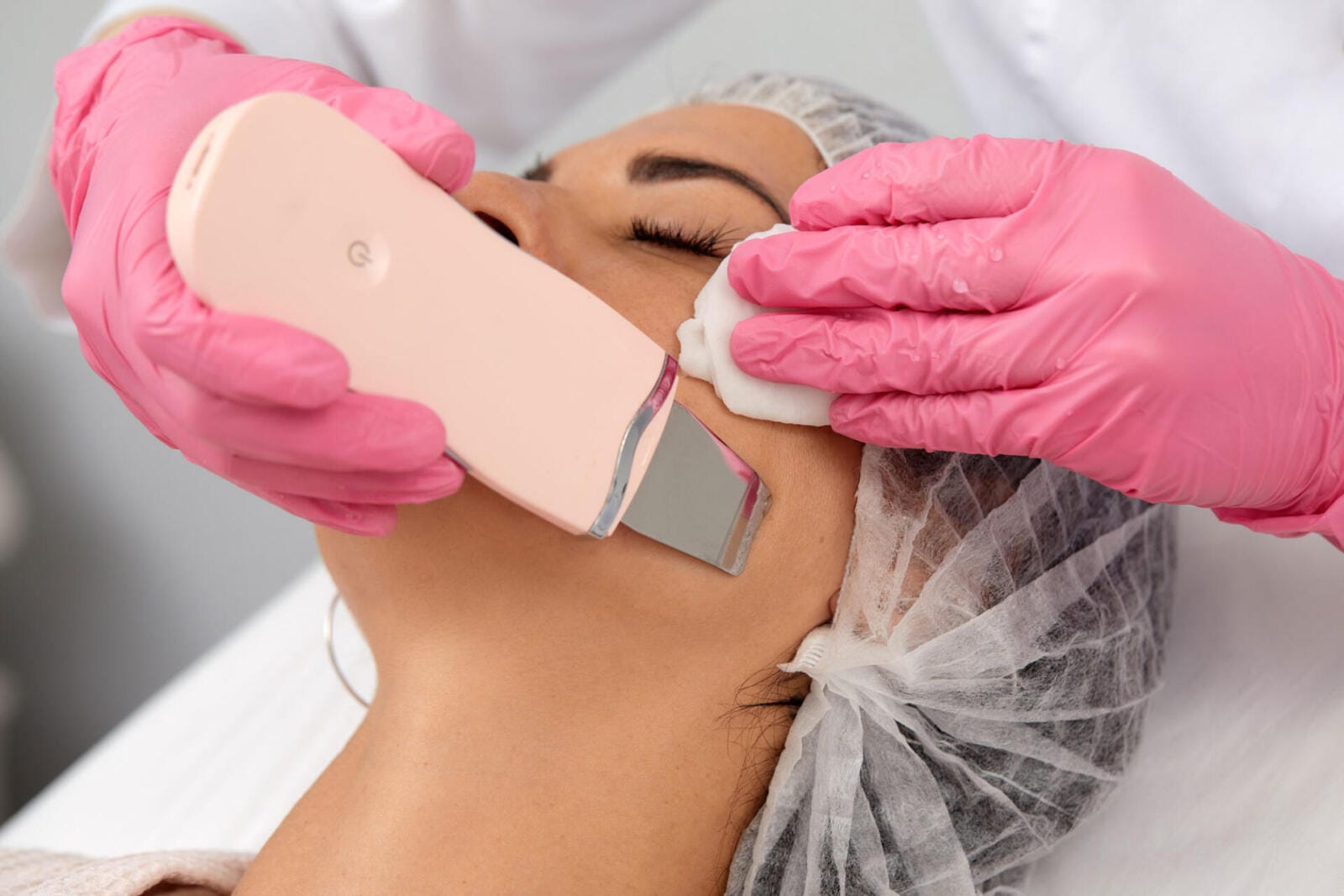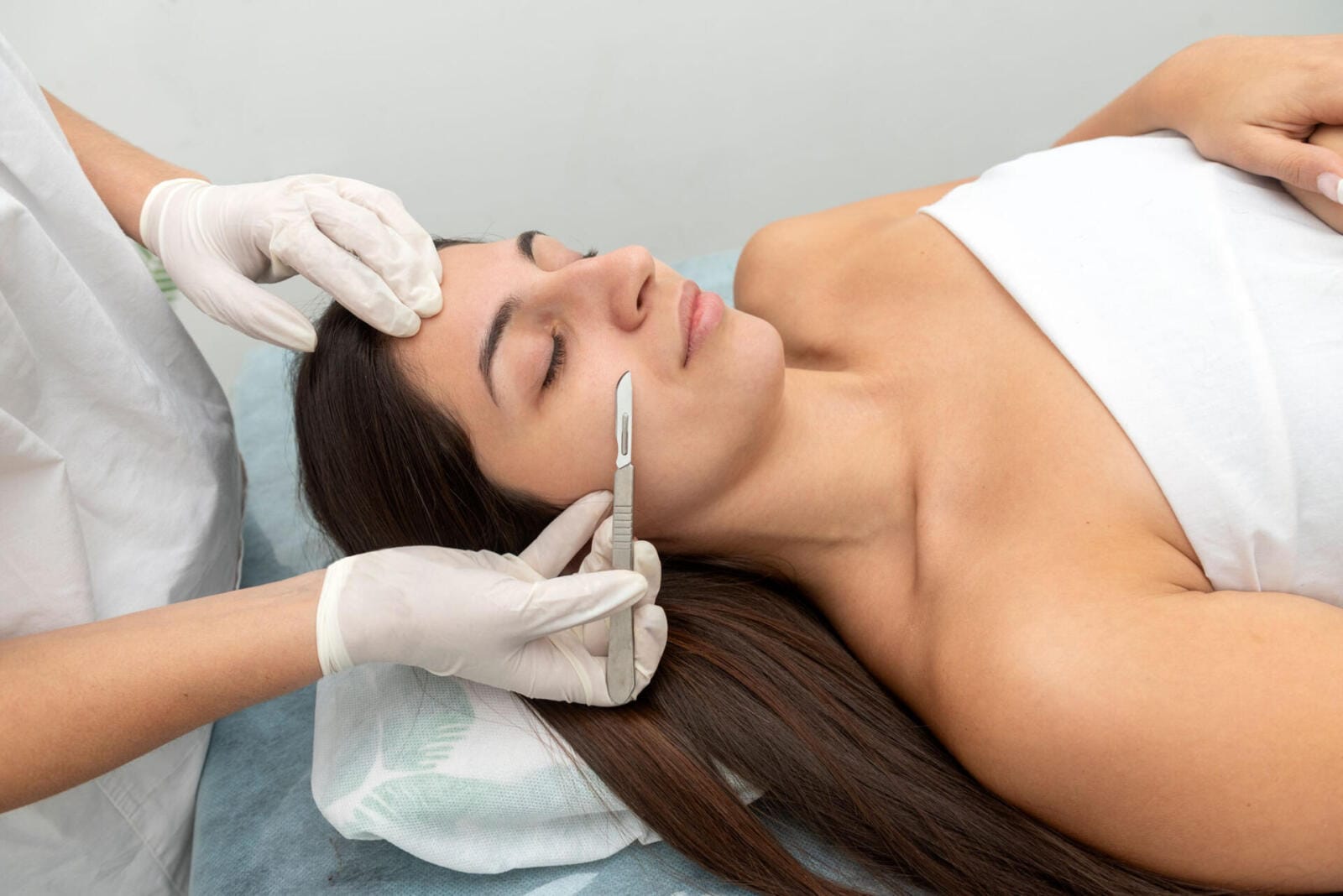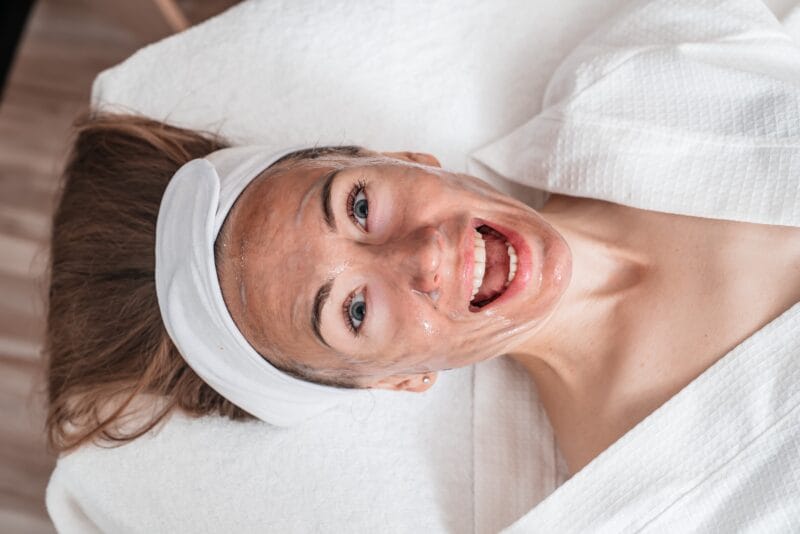Professional Skincare, Skincare
Dermaplaning for Fall Skincare Radiance: The Glow-Up Secret You’ve Been Waiting For
As the air starts to cool and the crispness of fall settles in, our skin often shows the first signs of seasonal transition. You might notice a little more dryness, an overall dullness, or even patches of flakiness that weren’t there during the humid summer months. If you’re like most people, the shift in weather can throw your skin off balance. This is where dermaplaning, a not-so-secret weapon in skincare, comes into play. It’s more than just a buzzword—it’s a ritual that can help maintain radiance all season long.
So, why has dermaplaning taken center stage, especially as we enter fall? A study published by the American Society of Dermatological Surgery showed that 92% of patients who underwent dermaplaning treatments reported smoother and brighter skin afterward. That’s no coincidence! With a tool as simple as a sterile surgical blade and a steady hand, dermaplaning sweeps away dead skin cells and peach fuzz (vellus hair) to reveal the fresh, glowing skin underneath. Think of it as an ultra-satisfying exfoliation on overdrive.
The Art of Dermaplaning: What It Really Is
Dermaplaning is a physical exfoliation technique that involves gently scraping off the top layer of dead skin cells and vellus hair from the face. Yes, it sounds a little intimidating—someone scraping your face with a blade—but it’s much gentler than it sounds. When done correctly, it’s painless and incredibly effective.
For a professional dermaplaning session, your esthetician uses a medical-grade scalpel to remove not only dead skin cells but also the fine hair that can trap dirt and oil on your face. This dual action brightens your complexion and allows for deeper penetration of skincare products. So, that serum or moisturizer you’ve been using? It’ll actually be able to do its job much better post-dermaplaning!
Not only does dermaplaning exfoliate the skin, but it also encourages cellular turnover, which is especially beneficial as the skin naturally starts to lose its vibrancy with the colder weather. You could think of it as preparing your skin for the new season—a kind of “reset button” for your complexion.
Why Fall Is the Perfect Time for Dermaplaning
Fall brings with it a series of environmental changes that impact your skin. Between the cooler air outside and the drying effects of indoor heating, your skin is more prone to dehydration, which can lead to a rough texture and lackluster glow. Combine that with residual sun damage from summer, and your complexion could use a little extra care.
Dermaplaning is a fantastic way to shed that sun-damaged, dry skin and make way for the smoother, healthier skin beneath. Think of it as a seasonal skincare reset, removing the remnants of summer and preparing your skin for the upcoming colder months.
Another advantage of dermaplaning in the fall is the opportunity for better product absorption. Once the dead skin cells are removed, your skin is far more receptive to hydration and nourishment. As your skin barrier is more vulnerable during cooler months, dermaplaning helps ensure your moisturizers and serums can deeply penetrate and work their magic.
The Science Behind Dermaplaning: Skin Cell Turnover and Hydration
What makes dermaplaning so effective is its direct influence on skin cell turnover. Our skin naturally sheds its cells, but sometimes this process can slow down, especially as we age. The average rate of cell turnover slows from about 28 days in our 20s to 40-60 days by the time we reach our 40s and beyond. Dermaplaning speeds up this natural process by removing the surface layer of dead cells that often cling to our skin longer than we’d like.
By scraping away this layer, you’re not only revealing newer skin cells but also making it easier for your skincare products to penetrate. Without that barrier of dead cells and peach fuzz, products like hyaluronic acid, retinoids, or peptides can reach deeper layers of the skin, where they’re most effective.
As fall comes with drier weather, hydration becomes crucial. Dermaplaning optimizes your skin’s ability to retain moisture because it allows your hydrating products to sink in better. This is essential during the colder months when your skin is more likely to lose moisture, leading to that uncomfortable tightness or flaky texture.
Busting the Myths: Will Your Hair Grow Back Thicker?
One common concern people have is that dermaplaning will cause their facial hair to grow back thicker and darker. Rest assured, this is a myth. The structure of your hair follicle doesn’t change because of dermaplaning. The blade cuts the hair at its surface, and it will grow back at the same rate and texture as before.
It’s also worth noting that dermaplaning removes vellus hair, which is the soft, fine hair on your face. Unlike terminal hair (like on your scalp or legs), vellus hair is not affected by hormonal changes or shaving techniques. So, the idea that dermaplaning will give you a five o’clock shadow is simply false.
Dermaplaning at Home vs. Professional Treatments
While there are plenty of at-home dermaplaning tools available, it’s essential to weigh the benefits of a professional treatment versus doing it yourself. At-home tools are designed to be less sharp and more user-friendly, which means they’re safer but also less effective than what you’d experience in a spa setting.
A professional esthetician has the training and expertise to deliver more precise and thorough results. They use medical-grade blades, ensuring a deeper exfoliation without causing irritation. Plus, they’ll know how to avoid sensitive areas and treat your skin post-treatment with calming and nourishing products.

That said, if you’re diligent about skincare and want to try dermaplaning at home, make sure to use a reputable tool and follow up with gentle, hydrating products to soothe your skin. Just be cautious: improper technique can lead to nicks, irritation, or worse, infections.
What to Expect During a Dermaplaning Session
If you’re new to dermaplaning and curious about what to expect, here’s a rundown of what happens during a typical session. First, your esthetician will cleanse and prep your skin, ensuring it’s free of oils and debris. Then, they’ll use a sterile surgical blade to gently scrape your skin, working in short, precise strokes. This part of the process usually takes around 30-45 minutes.
After the exfoliation, they’ll apply soothing products like hyaluronic acid, peptides, or cooling masks to calm the skin and lock in moisture. You might experience a slight tingling sensation, but there’s no downtime required. You’ll leave the treatment with skin that feels smooth, looks radiant, and is primed for makeup or a fresh face.
Post-treatment care is simple but crucial. Make sure to stay out of the sun for a few days and apply sunscreen religiously. Your skin will be more sensitive to UV rays after dermaplaning, so protecting it is vital. Additionally, avoid exfoliating products like retinoids or glycolic acid for a few days to prevent irritation.
Who Should Avoid Dermaplaning?
While dermaplaning is a safe and effective treatment for most people, there are certain skin conditions that may not be compatible. If you have active acne, rosacea, or eczema, dermaplaning may exacerbate inflammation. It’s best to consult a dermatologist or licensed esthetician to assess your skin’s needs before trying this treatment.
Moreover, individuals with highly sensitive skin or those using prescription retinoids should proceed with caution. Your skin may be too delicate for such a deep exfoliation, and it’s essential to tailor treatments to your unique skin type.
The Fall Skincare Routine You Need After Dermaplaning
Post-dermaplaning, your skin will be in an optimal state to absorb whatever you apply. For the fall season, focus on hydration and nourishment. Use a gentle, hydrating cleanser followed by a serum rich in hyaluronic acid, which helps retain moisture. Look for moisturizers containing ceramides or peptides to strengthen your skin barrier, protecting it from harsh weather and dryness.
And here’s the kicker—always, always wear sunscreen! While the days may be shorter and the sun less intense, UV rays can still cause damage, especially after an exfoliating treatment like dermaplaning. A broad-spectrum SPF of 30 or higher is non-negotiable.
The Glow of Fall, One Dermaplane at a Time
Dermaplaning is an excellent way to refresh your skin for the fall season, helping you maintain that radiant glow we all crave. By removing dead skin cells and peach fuzz, you’ll not only feel smoother but also notice that your skincare products work better, and your makeup applies more seamlessly.
With the change of seasons comes an opportunity to shake up your skincare routine. So why not let dermaplaning be your go-to treatment for a radiant, luminous complexion this fall? Whether you choose to go pro or try it at home, your skin will thank you!





